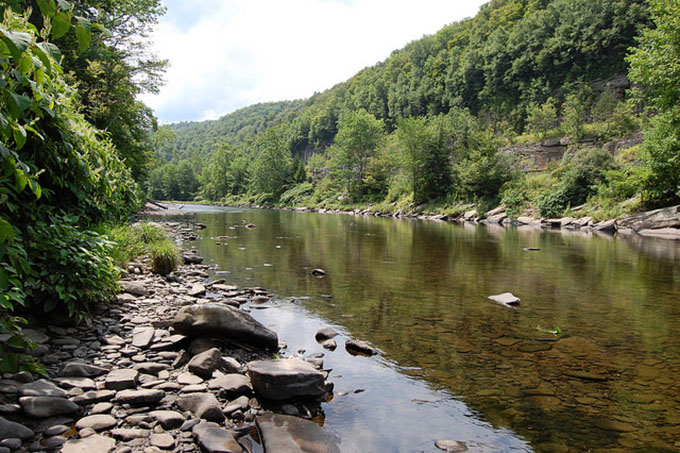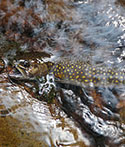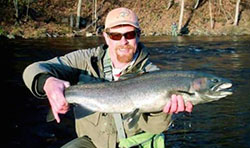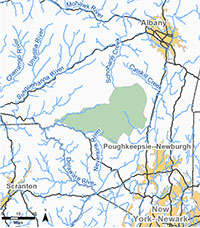As natural gas extraction expands across the Central Appalachian region, that industrial-scale energy development is encroaching on public lands that are critically important for fishing and hunting. In this report, Trout Unlimited takes a deeper look into those public places, outlining the potential risks posed by gas drilling operations and providing recommendations from sportsmen and women that promote responsible energy development.
Catskill Park

The Place
Known as the birthplace of American fly-fishing, New York’s Catskill Park is a fishing destination for anglers from across the nation. Brook, brown and rainbow trout thrive in many Catskill streams, such as Esopus and Kaaterskill creeks, and in larger rivers such as the Neversink and Beaverkill. Many of these same streams feed into the drinking water supply for more than nine million New York City residents.For centuries, the Catskill landscape has been synonymous with a wilderness sporting experience. Hunting is a way of life in the Catskills, evidenced by the names of many of its water bodies and towns, such as Hunter Lake, Hunter Pond, Hunter Mountain, Deer Lake and the town of Hunter. Deer, bobcat, mink, fisher and coyotes are plentiful and an estimated 1,500 to 2,000 black bears live in or near the Catskill Park.
The Threat
Combined, New York state and New York City own almost half of the land within the Catskill Park, lands that the state has proposed as off limits to gas drilling. The remaining privately owned lands, found mostly on the edges of the park, provide important fish and game habitat.
The industrial activity associated with shale gas drilling is inconsistent with the slow way of life that has defined the Catskill Park for centuries. Erosion and sedimentation from drilling-related construction activities could affect waters that would have direct impacts on trout and the extensive angling opportunities that exist there. Clearing forest cover and vegetation for well pads and pipelines creates openings in the landscape that alter game habitat and put sensitive wildlife species at risk for predators. The culture of hunting, trapping and fishing in the Catskill Park could be significantly affected without having adequate protections in place.
The Need to Protect
 Anglers and hunters are passionate about the Catskill Park because of its significant fish and game habitat and its proximity to major population centers along the East coast. To protect the park’s resources, sportsmen and women want New York officials to uphold the proposed ban on surface drilling on all state lands within the park and to establish a strict set of standards for if/how energy development may occur on private lands within and near the park.
Anglers and hunters are passionate about the Catskill Park because of its significant fish and game habitat and its proximity to major population centers along the East coast. To protect the park’s resources, sportsmen and women want New York officials to uphold the proposed ban on surface drilling on all state lands within the park and to establish a strict set of standards for if/how energy development may occur on private lands within and near the park.
If drilling occurs on private lands, there should be setbacks between well pads and the edge of state lands, as well as setbacks from surface waters. Pre-lease planning should occur to identify significant habitat that may be the most vulnerable to impacts from shale gas development and those areas should be off limits to drilling-related activities. Best management practices should also be required for any drilling on private lands to limit impacts to the park’s rich natural resources and to fulfill the intended reason for establishing the Catskill Park — to maintain the landscape as “forever wild.”
SPORTSMEN IN THE SPOTLIGHT
We don’t have a great deal of open space in the Northeast, and I think it’s important for us to preserve what we do have.” Evan Lavery, Owner Beaverkill Angler



